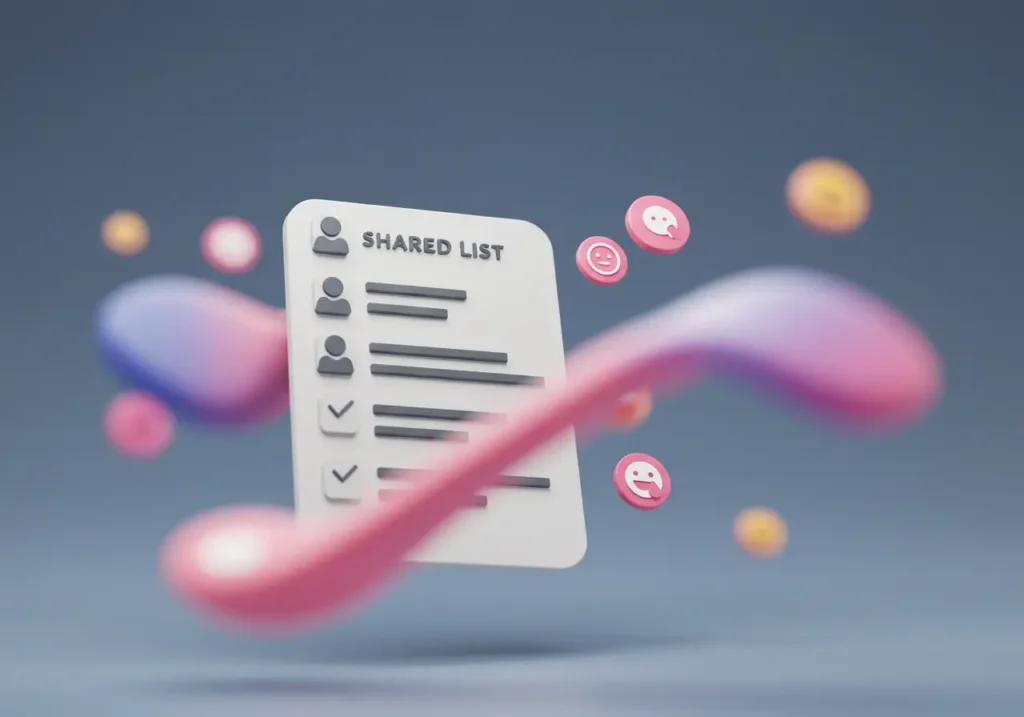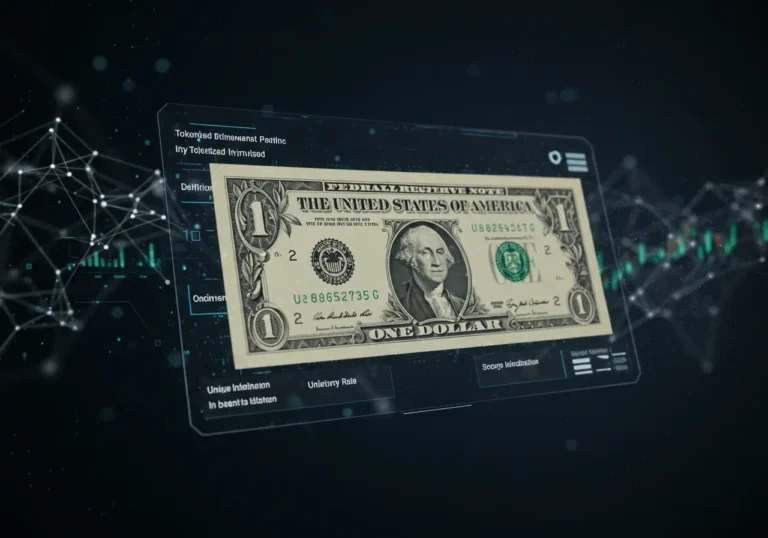Distributed Ledger Technology (DLT): A Beginner’s Guide
Ever tried planning a big potluck dinner with a group? Someone brings a list. Then someone else scribbles on it. Then it gets lost. Chaos! Half the people bring chips, nobody brings dessert. Wouldn’t it be amazing if everyone had the same list, updating instantly? No arguing, no lost info. Everyone just knows.
Well, guess what? That’s basically the idea behind Distributed Ledger Technology (DLT). Sounds fancy, right? Don’t let the name scare you off. It’s actually a pretty simple, concept once you peel back the layers. And honestly? It took me a while to really get it too. I remember scratching my head, thinking, “Okay, but how does this actually work in real life?” Let’s figure it out together, step by simple step.

So, What the Heck is Distributed Ledger Technology Anyway?
Imagine that potluck list. Instead of one person holding it, every single person planning to come gets their own identical copy. When someone adds “Sarah – bringing lasagna,” that update instantly appears on everyone’s list. Instantly. No waiting. No confusion. And once it’s written down? It’s permanent. Sarah can’t later sneakily change it to “Sarah – bringing napkins” on just her copy. The group wouldn’t allow it. Her copy has to match everyone else’s.
That, my friend, is the heart of Distributed Ledger Technology. It’s a way of keeping records – like who sent money to whom, who owns what, or where a product came from – but instead of one company or bank holding the master list, lots of computers all over the place hold identical copies. They all talk to each other constantly, making sure everyone agrees on what’s true. It’s shared record-keeping. Simple as that.
How Does This “Shared List” Thing Actually Function?
Okay, let’s break it down. How does it really work day-to-day?
- Someone Makes an Update: Let’s say Lisa wants to send Tom $10 digitally. That’s her update to the ledger: “Lisa gives Tom $10.”
- Shout it Out: Lisa’s computer shouts this update out to a whole bunch of other computers (called “nodes”) on the network. Think of it like yelling your potluck contribution to the whole group chat.
- Group Check: All those computers quickly check: “Does Lisa actually have $10 to send?” They look at their shared history. If most of them agree she does, the deal is good to go. It’s like the group confirming, “Yep, Lisa signed up for lasagna, she hasn’t flaked before!”
- Lock it In: Once approved, this transaction (along with others happening around the same time) gets bundled up into a neat little package called a “block.” This block gets securely linked to the previous block, forming a chain. Hence the term “blockchain” you might have heard – it’s one popular type of DLT. Like adding a new, verified page to our shared potluck list.
- No Take-Backs: Once that block is added and linked? That’s it. It’s permanent history on everyone’s copy. Tampering with just one copy is useless because it won’t match the thousands of others. Changing history means changing every copy at the same time, which is basically impossible. Game over for cheaters.
Pretty neat, huh? It builds trust because the group verifies everything, not some single authority you just have to hope is honest.
Why Should You Even Care About DLT?
Fair question! It might seem like tech for tech’s sake. But DLT solves some real headaches we all face:
- Trust Without the Middleman: Usually, we need banks, lawyers, or big companies to be the trusted referee. With DLT, the network itself is the referee. That can save time, hassle, and money. Imagine sending money directly to a friend overseas without crazy fees or waiting days.
- Rock Solid Security: Hacking one computer? Doesn’t matter. The info is on thousands. Hacking them all simultaneously? Good luck with that. It’s incredibly tough to mess with.
- Total Transparency (When Needed): Everyone plays by the same rules, and the history is clear. This is huge for things like making sure charities actually spend donations as promised, or that products are really organic and fair-trade. No more shady backroom stuff.
DLT Isn’t Just Talk: See It Working Right Now
This isn’t science fiction. DLT is popping up in places you might not expect:
- Following Your Stuff from Start to Finish (Blockchain for Supply Chain Management): Remember that banana you ate? With blockchain for supply chain management, every step is recorded on a shared ledger: picked on Farm A, shipped by Company B, stored in Warehouse C, stocked by Store D. Everyone involved can see it. Was it really organic? Where did that contamination scare start? Solved way faster. No more “lost” shipments or fake labels. Piece of cake! Well, piece of banana.
- Contracts That Run Themselves (Smart Contracts on Blockchain): Think of a smart contract on blockchain like a super-specific vending machine. The rules are baked right in: “IF John pays the $500 rent on the 1st, THEN the digital door code works for the month.” No landlord needing to check, no reminders. It just happens. They’re being used for things like automatic insurance payouts if your flight is super late, or releasing escrow money instantly when a house sale closes. Set it and forget it!
- Banking, But Different (Decentralized Finance Applications): This one’s a bit wild. Decentralized finance applications (often called DeFi) use DLT to cut out traditional banks entirely. Imagine lending money directly to someone across the world and earning interest, without a big bank taking a huge cut. Or swapping currencies instantly and cheaply. It’s like a global, peer-to-peer financial system. Still new, still figuring things out, but the potential? Huge.
- Private Groups Playing by Shared Rules (Permissioned Blockchain Networks): Not all DLT networks are wide open like Bitcoin. Sometimes you need privacy. Permissioned blockchain networks are like invite-only clubs or business groups. Think hospitals sharing patient records securely – only approved doctors see the details, but everyone knows the record hasn’t been tampered with because the shared ledger verifies it. Keeps things accurate and confidential.
- Getting Different Systems to Talk (Interoperability Between Different Blockchains): Right now, many DLT networks are like islands. They don’t communicate easily. Interoperability between different blockchains is the big effort to build bridges between them. Imagine if your Gmail could seamlessly chat with someone on Outlook. That’s the goal here – letting information and value flow smoothly between different DLT systems. It’s a work in progress, but super important for the future.
Hold Up, It’s Not All Perfect
Look, no technology is magic. DLT has its growing pains:
- Speed Bumps: Some big public DLT networks can be slower than your regular Visa transaction, especially when super busy. They’re getting faster, but it’s a thing.
- Energy Guzzlers (Sometimes): Some early systems (like the original Bitcoin setup) used crazy amounts of electricity to run that “group agreement” step. Newer methods are way better, solving this problem head-on.
- Confusion Central: People often think “DLT = Bitcoin = only for buying weird stuff online.” Nope! Bitcoin uses DLT, but DLT is the much bigger, broader idea. It’s like confusing email with the whole internet.
Where Could This Be Headed? Let’s Dream a Little
Imagine a world where…
- Voting happens on super-secure DLT systems, making cheating near impossible and results instantly verifiable.
- Buying a house? The deed updates instantly on a shared ledger the moment you sign, no weeks of waiting and piles of paperwork.
- You lose your college diploma? Just pull up the verified digital copy stored immutably on a DLT network. No frantic calls to the registrar.
We’re looking at a future where trust is built into the system, not just hoped for. Where things move smoother and fairer.
Wrapping This Up (For Now!)
So, Distributed Ledger Technology? It’s not about complex code. At its core, it’s about that simple idea: a shared list everyone trusts. Like our potluck list, but for important stuff – money, contracts, ownership, supply chains.
It’s about making systems transparent, secure, and fair by spreading the responsibility and the record-keeping across many players. From tracking your coffee beans to running automatic contracts to exploring new ways to bank, DLT is quietly building a foundation for a different kind of digital world.
You don’t need a PhD to understand the why behind it. You just need to see how sharing the list – properly – solves so many problems we’re used to putting up with. And hey, you made it this far! You’re already getting it.
Quick Bites: The Main Stuff Again
- DLT = Shared Digital Truth: Imagine a record book copied perfectly onto thousands of computers, all agreeing constantly. That’s DLT.
- Tough to Cheat: Changing one copy is pointless. You’d need to change all copies simultaneously – practically impossible.
- More Than Bitcoin: Powers real-world stuff like tracking goods (blockchain for supply chain management), self-executing agreements (smart contracts on blockchain), and open finance (decentralized finance applications).
- Public or Private: Can be open to anyone (like Bitcoin) or restricted groups (permissioned blockchain networks) for sensitive stuff.
- The Next Challenge: Making different DLT systems talk to each other (interoperability between different blockchains) is key for the future.
- Work in Progress: Speed and energy use are getting better all the time. It’s evolving fast.
What part of DLT still seems a bit fuzzy? Or where do you see it making the biggest difference? Seriously, I’d love to hear your thoughts – drop ’em below!
Table of Contents

Hello, I’m Edmilson Dias, founder of CoinBringer. I created this platform to guide people through the fast-moving world of cryptocurrency with clarity and safety. With years of research in blockchain and digital security, my goal is to translate complex topics into practical knowledge, offering reliable tutorials, safety insights, and guidance for both newcomers and experienced users.
Discover more from CoinBringer
Subscribe to get the latest posts sent to your email.







